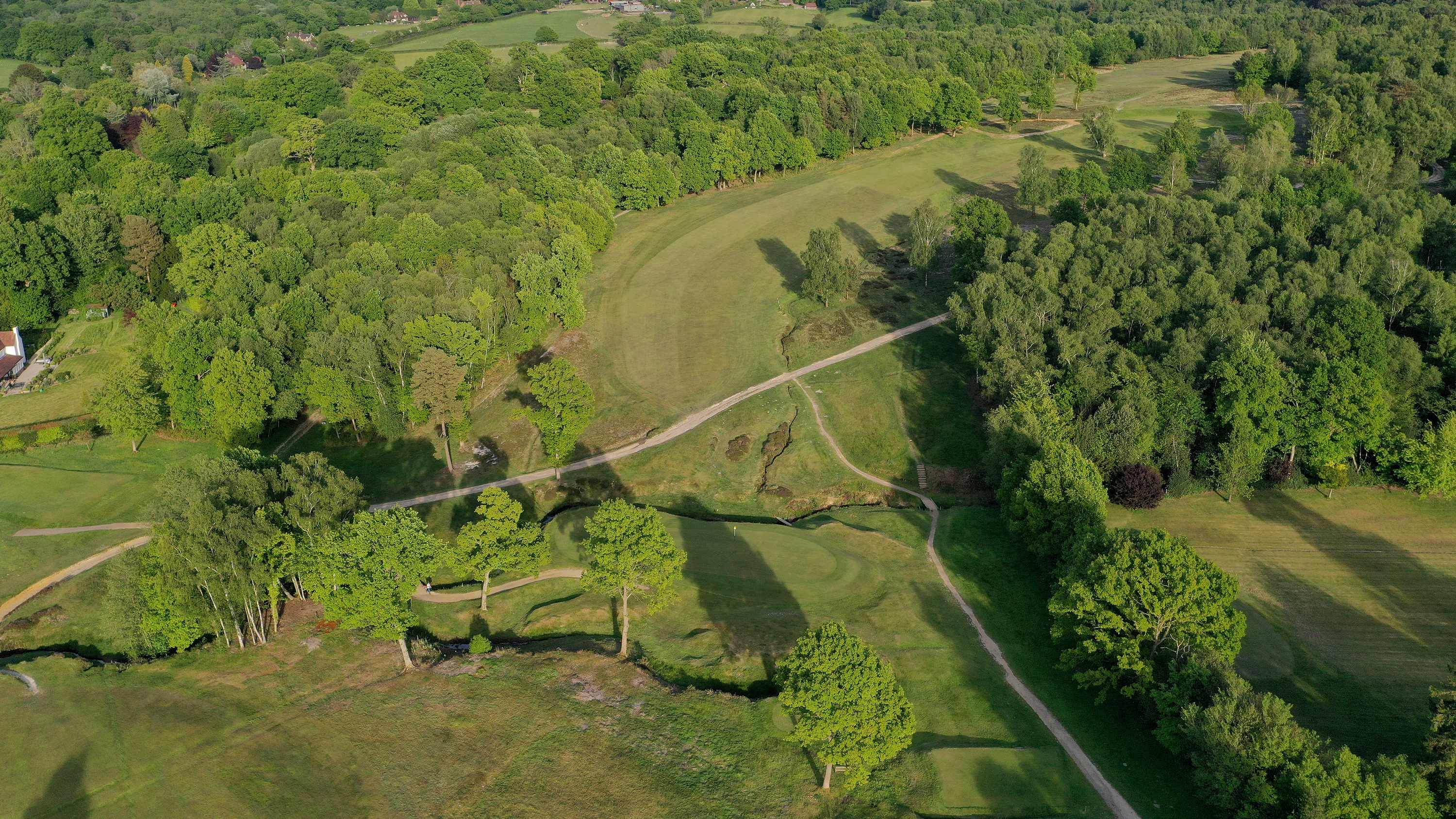What Is A Dogleg In Golf?
A definition of the golfing term Dogleg – Where does it come from and what exactly is it?


A dogleg hole is one that is crooked or bends like the hind leg of a dog. Doglegs tend to be strategic holes where the player must aim to find a suitable spot on the fairway from the tee with which to get around the bend, or dogleg of the hole, with the next shot.
Doglegs are commonly used in golfing design to present a challenge to the golfer. Sometimes they may present an opportunity for risk and reward as well. If a hole is a dogleg around water for example, then the player can choose how much of that dogleg or corner they can risk cutting.
It may be possible to cut the corner of dogleg holes that don’t feature any water too. Perhaps the dogleg travels around thick rough or bushes? Again, there may be an opportunity to cut the corner and shorten the hole.
How Do Golfers Use The Term Dogleg?

A dogleg at Royal Ashdown Forest
If a hole turns to the right, golfers may describe it as a “dogleg right.” If a hole bends to the left, they’ll say it’s a “dogleg left.” A dogleg can turn slightly or severely. Some extreme dogleg holes will turn almost 90 degrees.
Longer holes, par-5s generally, may be described as double doglegs. This is where the hole turns one way and then later down its length, it turns back. The designer A.W. Tillinghast was known for creating double dogleg holes.
How Do You Play Dogleg Golf?
It’s very much about strategy and deciding how aggressive to be. If you like to play safe then you will generally aim to play a straight shot with a club that will take you to the corner of the dogleg. You will be more likely to find the fairway but will have a longer shot towards the green from there.
If you’re an aggressive player, you may choose to try and follow the curve of the dogleg and to shape a shot that turns either from left to right or right to left, depending on the direction of the dogleg. This is a higher tariff approach but if successful, it will effectively shorten the hole by removing the angles.
Subscribe to the Golf Monthly newsletter to stay up to date with all the latest tour news, equipment news, reviews, head-to-heads and buyer’s guides from our team of experienced experts.

Fergus is Golf Monthly's resident expert on the history of the game and has written extensively on that subject. He has also worked with Golf Monthly to produce a podcast series. Called 18 Majors: The Golf History Show it offers new and in-depth perspectives on some of the most important moments in golf's long history. You can find all the details about it here.
He is a golf obsessive and 1-handicapper. Growing up in the North East of Scotland, golf runs through his veins and his passion for the sport was bolstered during his time at St Andrews university studying history. He went on to earn a post graduate diploma from the London School of Journalism. Fergus has worked for Golf Monthly since 2004 and has written two books on the game; "Great Golf Debates" together with Jezz Ellwood of Golf Monthly and the history section of "The Ultimate Golf Book" together with Neil Tappin , also of Golf Monthly.
Fergus once shanked a ball from just over Granny Clark's Wynd on the 18th of the Old Course that struck the St Andrews Golf Club and rebounded into the Valley of Sin, from where he saved par. Who says there's no golfing god?